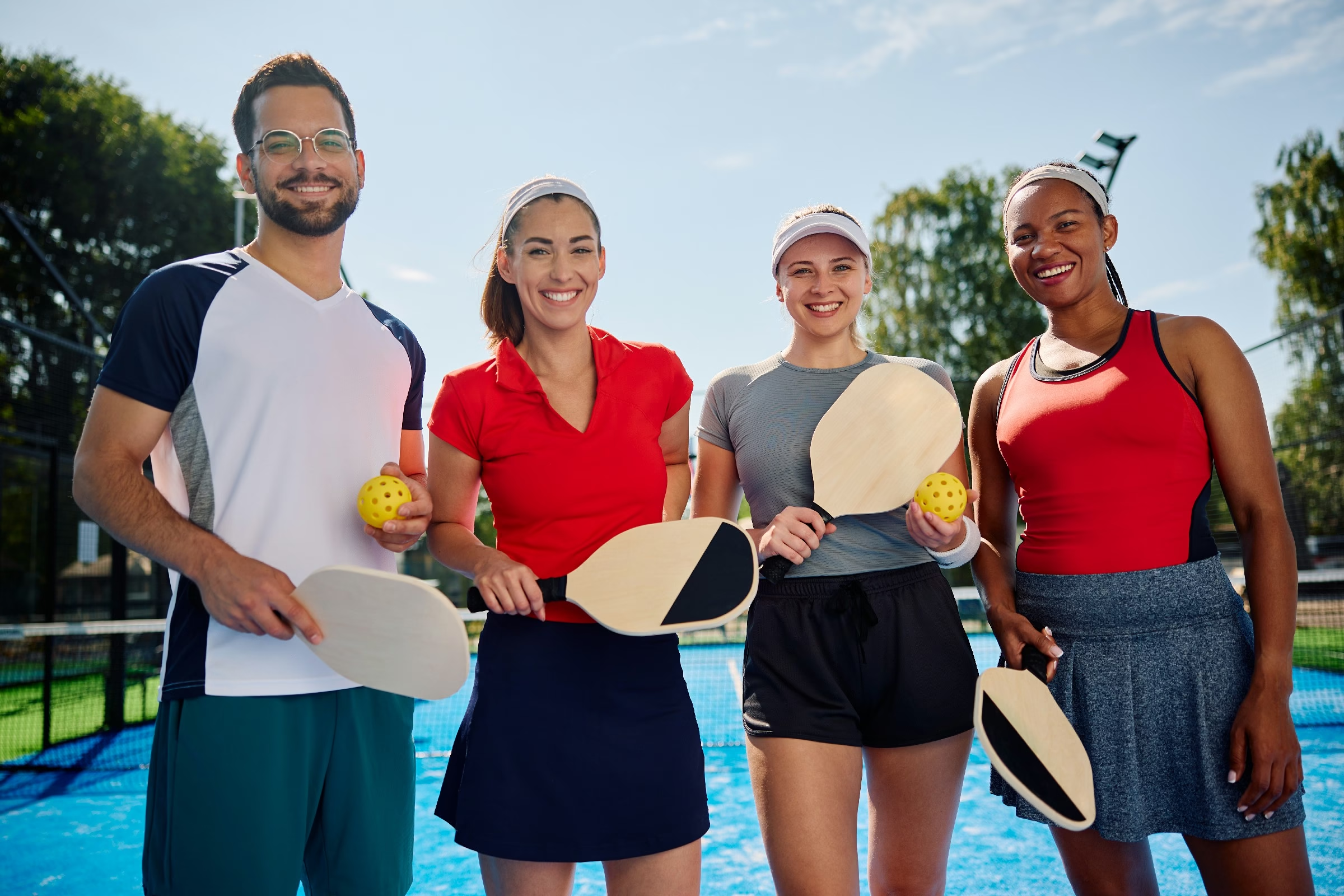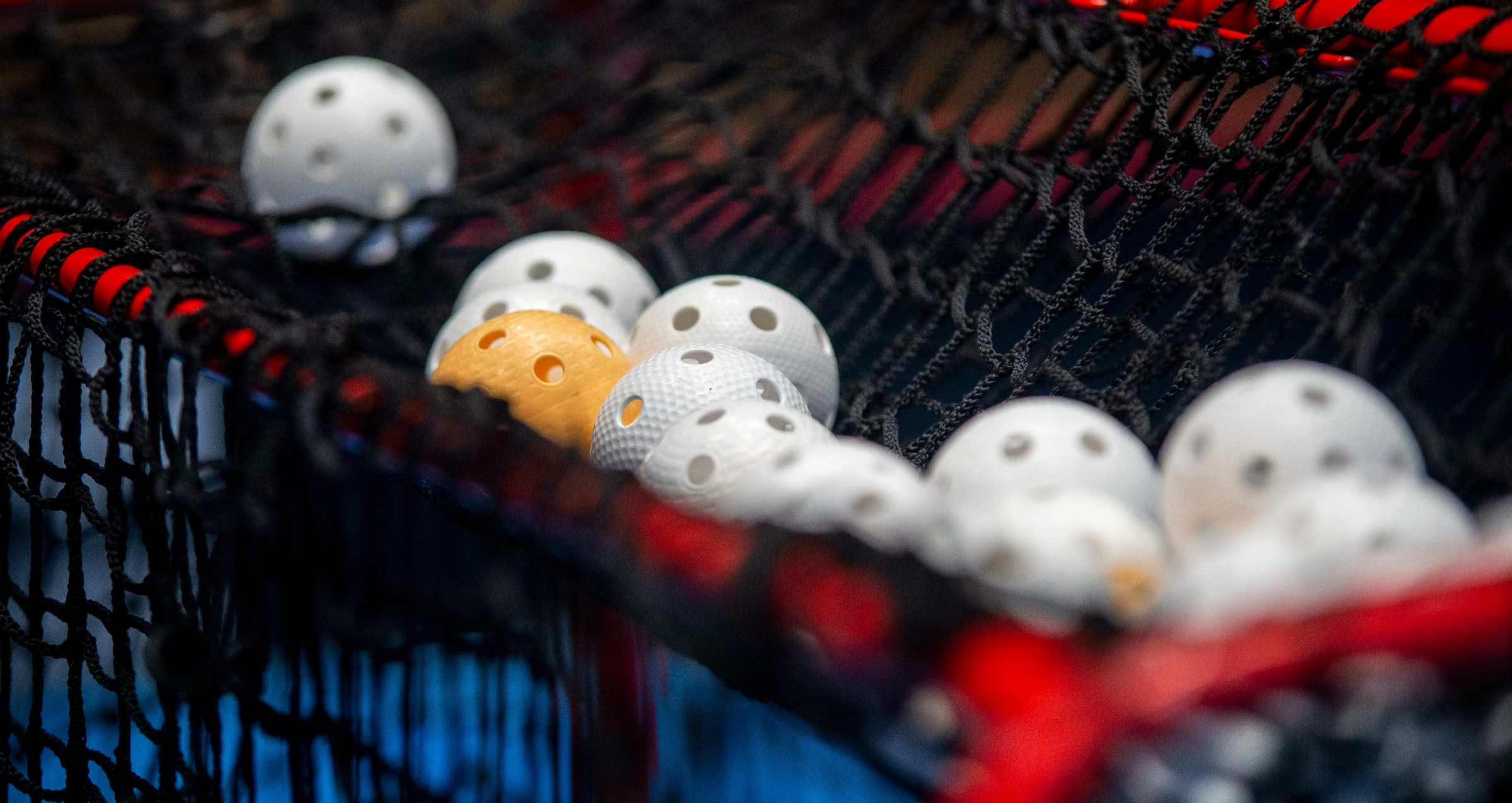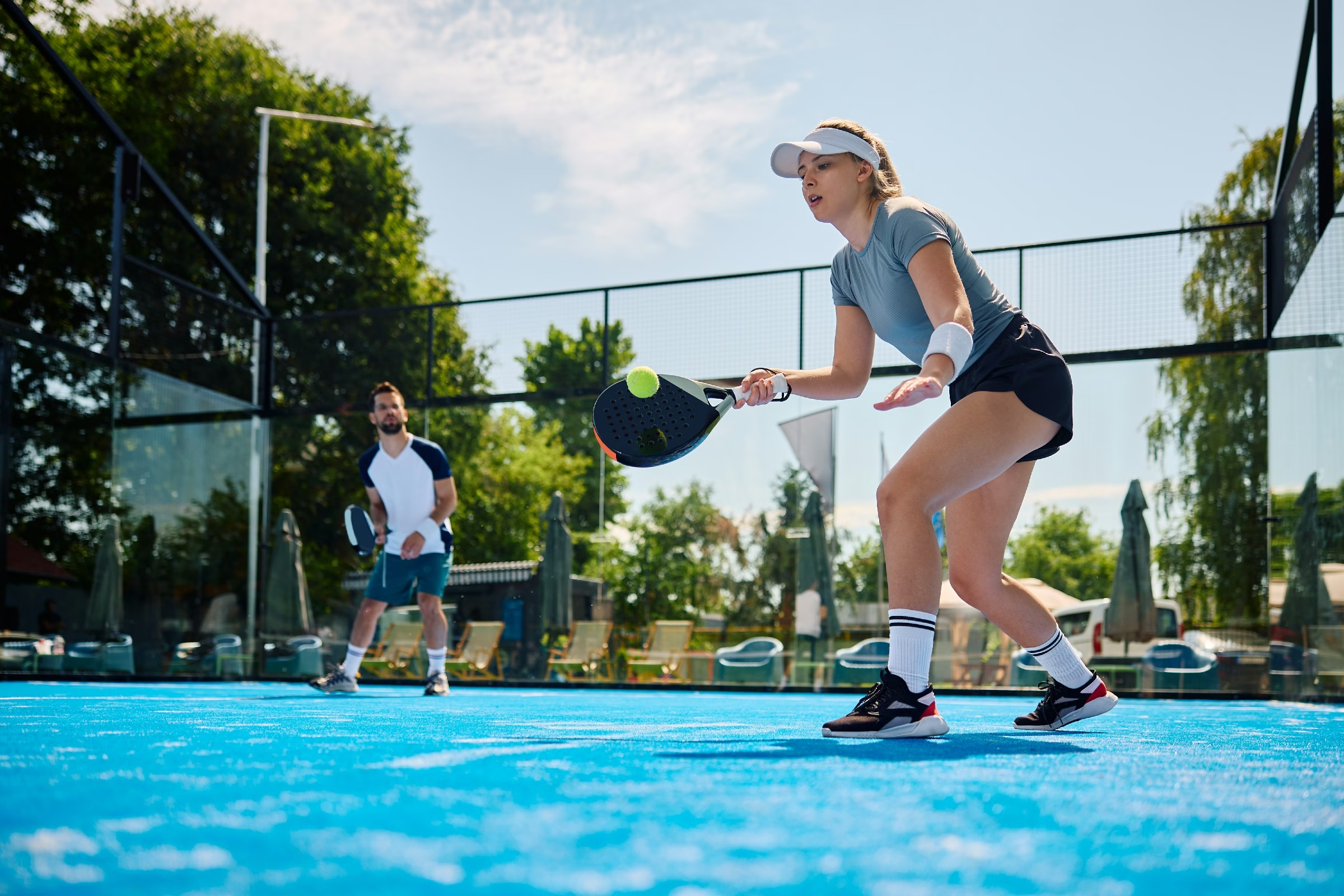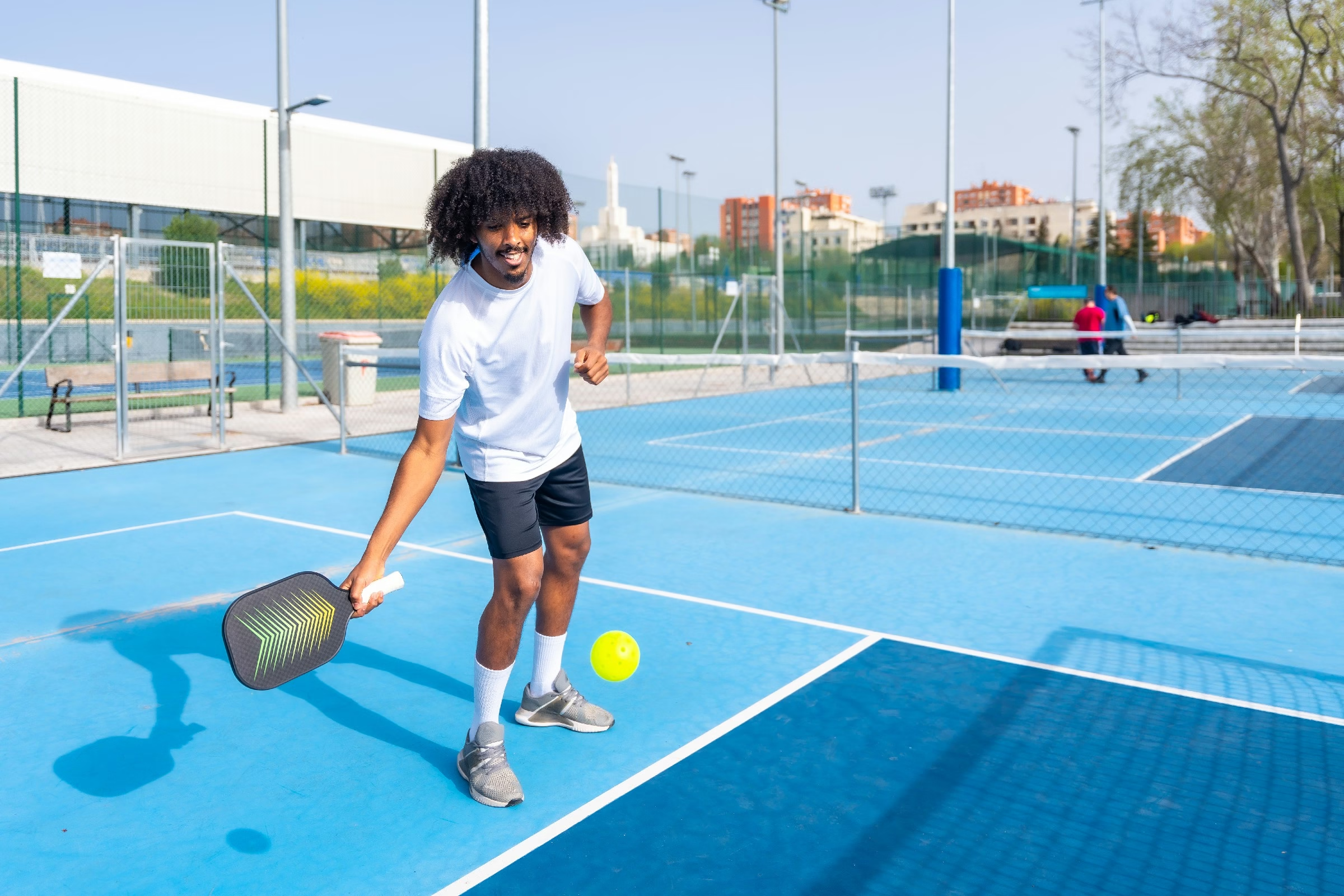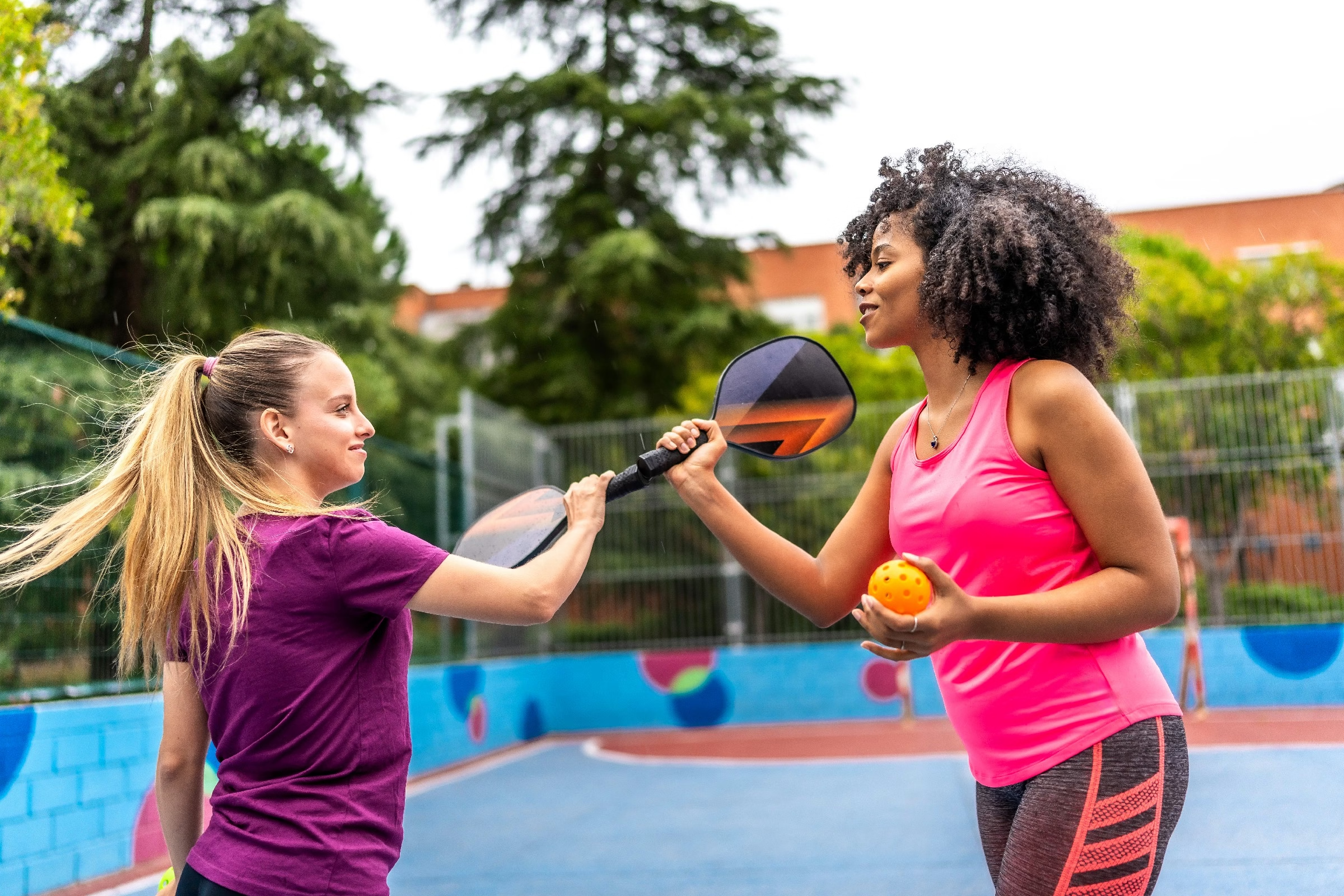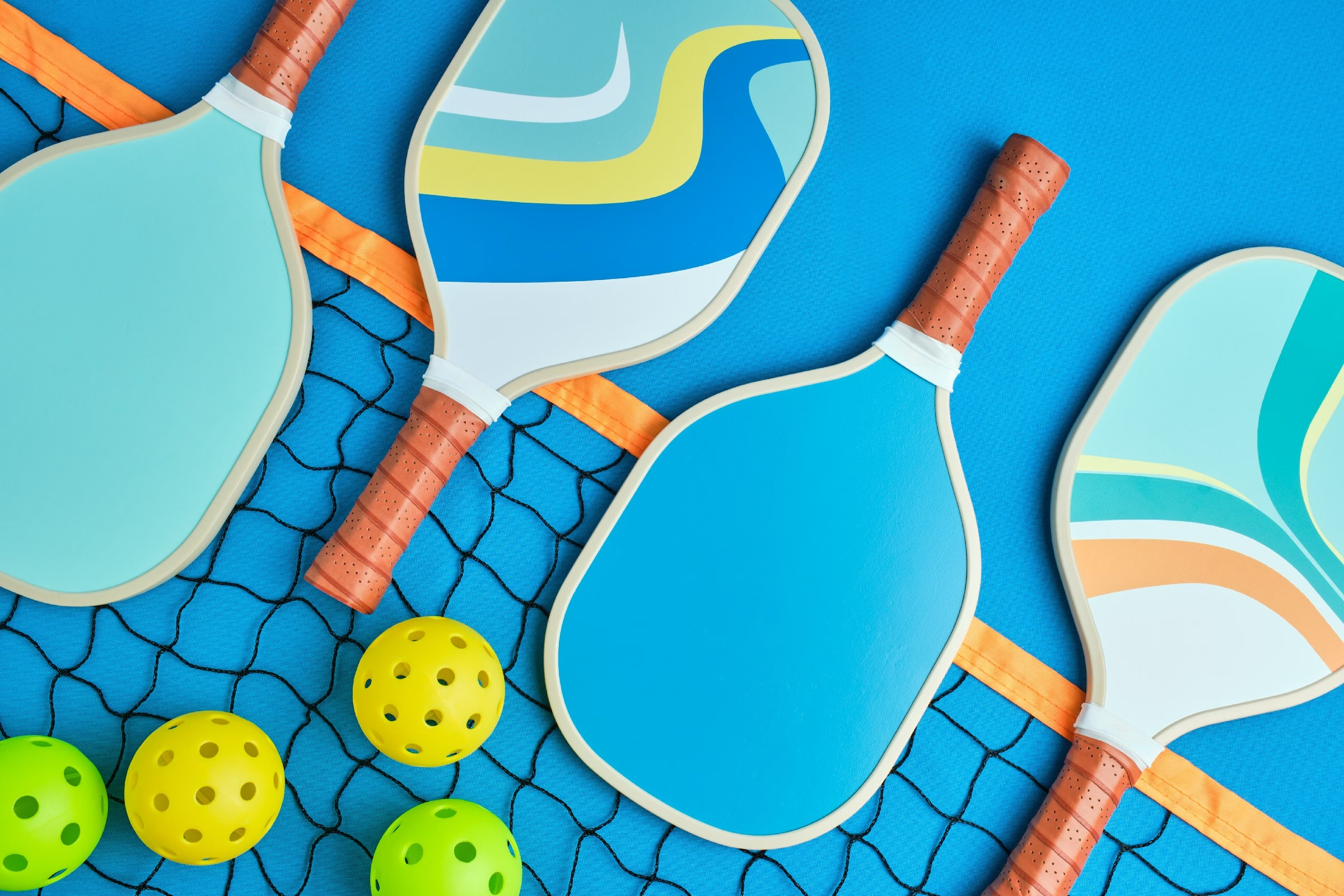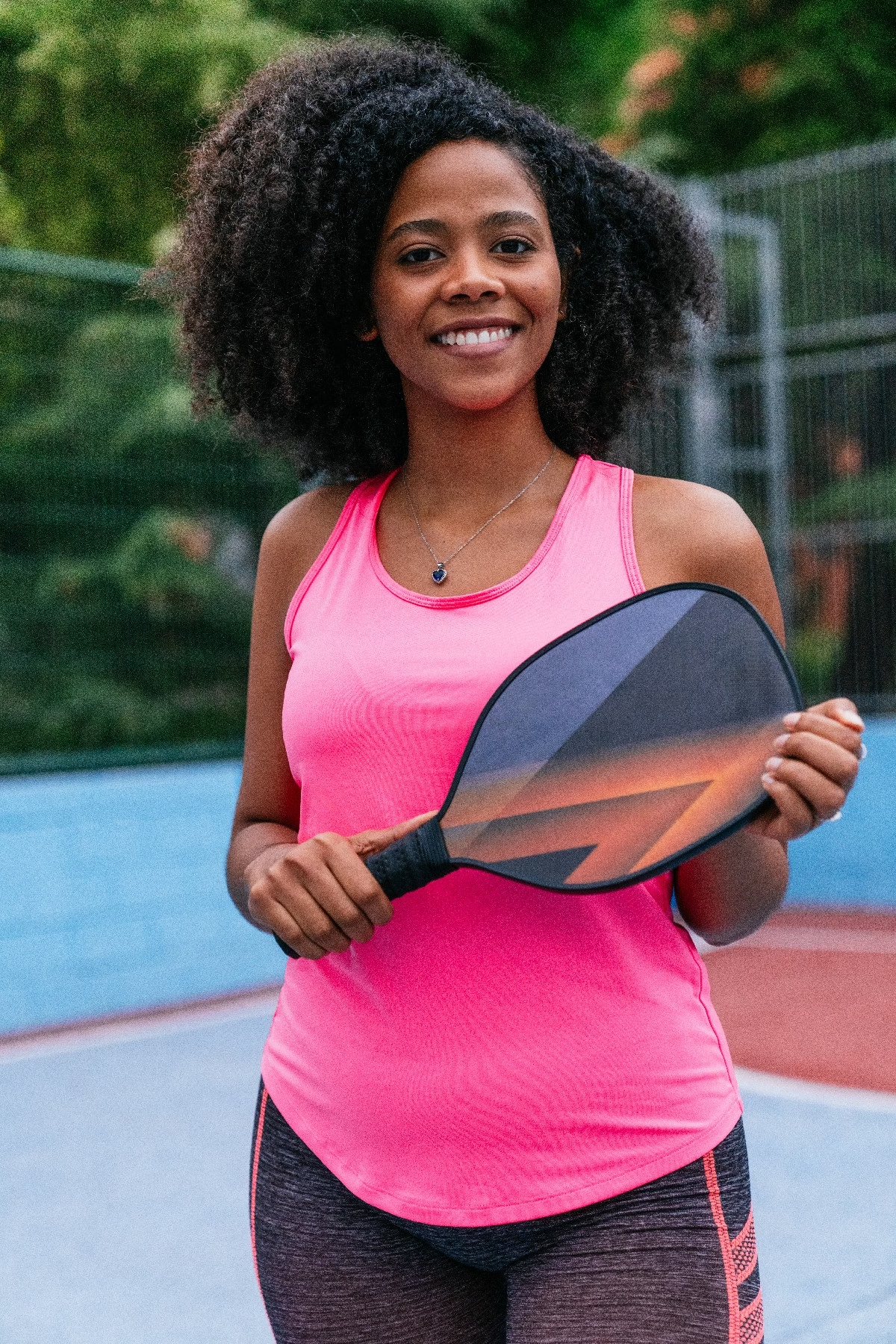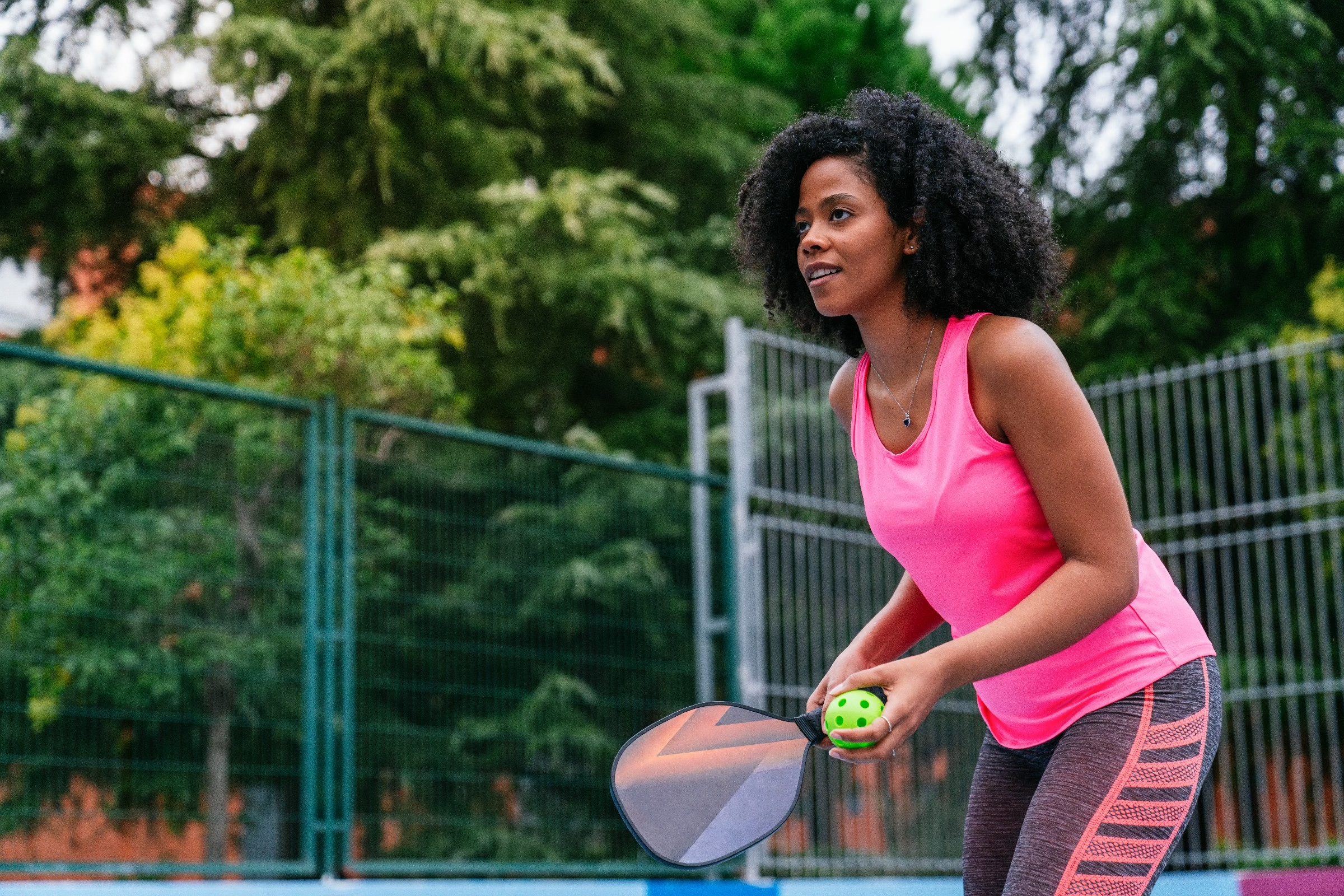Blog
how popular is pickleball in the united states

In recent years, a new sport has been quietly making waves across the United States, captivating athletes and weekend warriors alike with its unique blend of strategy, skill, and social interaction. Enter pickleball—the game that combines elements of tennis, badminton, and ping pong, offering a compact court and an engaging experience for players of all ages. Once a niche pastime, its appeal has surged dramatically, transforming it into one of the fastest-growing sports in the country. As communities embrace this lively game, the question arises: just how popular is pickleball in the United States? In this article, we delve into the numbers, the trends, and the cultural phenomena surrounding this beloved sport, exploring what has propelled pickleball into the national spotlight and why it continues to capture the hearts of many.
Table of Contents
- emerging Trends Shaping Pickleball Popularity in America
- Demographics of the Pickleball Community
- Exploring the Social and Health Benefits of Pickleball
- the Role of Local and National Organizations in Promoting the Sport
- Pickleball Facilities and Playing Opportunities Across the U.S.
- Future Prospects: What Lies Ahead for Pickleball Enthusiasts
- Q&A
- Future Outlook
Emerging Trends Shaping Pickleball Popularity in America
As pickleball continues to gain traction across the United States, several emerging trends are contributing to its growing appeal. The multigenerational nature of the sport is one of the most significant drivers of its popularity, attracting players of all ages. Families are increasingly participating together, making it a social activity that fosters connections and builds community. This inclusive environment encourages newcomers to join, further enhancing the sport’s growth.
Another factor fueling the popularity of pickleball is the rise of technology and smart equipment. With advancements in racquet design and the introduction of specialized court materials, players are experiencing enhanced performance and enjoyment on the court. Social media platforms are also helping enthusiasts connect, share tips, and promote tournaments. As players showcase their skills and experiences online,they inspire others to try the game,contributing to a positive feedback loop of interest and participation.
| Trend | Description |
|---|---|
| Community Centers | Increasing number of local centers offering pickleball courts and programs. |
| Senior Participation | Engagement of older adults seeking fun and low-impact exercise. |
| Youth Programs | Growing initiatives targeting younger players to build future interest. |
The economic impact of the sport is also noteworthy. As demand for pickleball facilities rises,investments in dedicated courts and equipment have surged. Cities are recognizing pickleball as a valuable asset for community advancement and recreation, leading to strategic partnerships to expand accessibility. This infrastructure trend not only bolsters local economies but also establishes pickleball as a staple in American sports culture.
Demographics of the Pickleball Community
The pickleball community is as diverse as the game itself, attracting players of various ages, backgrounds, and skill levels. from young children picking up their first paddle to seniors engaging in a gentle yet exhilarating activity, the sport fosters inclusivity and camaraderie. Some key demographics include:
- Age Groups: While pickleball is gaining traction among younger players, it has particularly resonated with the 50+ age group, making it a popular choice for retirees seeking both social interaction and physical activity.
- Gender Distribution: Both men and women participate actively, with slight variations from region to region. Many community centers host mixed-gender leagues, promoting friendly competition.
- Ethnic Diversity: Pickleball is played across various ethnic groups, reflecting the multicultural fabric of the United states. This diversity enriches the community, as different cultural perspectives come together on the court.
The growth of pickleball is also visible in organized leagues and tournaments, which cater to different skill levels and age categories. Many clubs are expanding their reach by offering beginner classes, making the sport more accessible. Here’s a brief overview of participation breakdowns:
| Age Group | Percentage of participants |
|---|---|
| 18-34 | 15% |
| 35-49 | 30% |
| 50+ | 55% |
As the sport continues to evolve, the desire for community, competition, and enjoyment keeps drawing in more individuals from various demographics. Weather it’s at a local park, community center, or a competitive league, pickleball acts as a unifying force, bridging gaps of age and background, and creating bonds founded on a shared love for the game. As participation rates climb, this inclusive spirit will undoubtedly further shape the future landscape of the pickleball community.
Exploring the Social and Health Benefits of Pickleball
Pickleball has rapidly emerged as a favorite pastime for many across the United States, providing a vibrant social environment for players of all ages.This sport is designed to foster social interaction, tapping into the communal spirit that comes from playing doubles or hosting local tournaments. Players often find themselves forming friendships and networks,enhancing their community bonds. The casual nature of the game encourages dialogue and camaraderie, making the courts a gathering place for laughter and social engagement.
beyond its social advantages, engaging in pickleball offers a variety of health benefits. The sport provides a full-body workout that is both low-impact and accessible, making it an ideal choice for individuals looking to maintain their fitness without the strain of more strenuous activities. Players can experience improvements in endurance, agility, and strength, all while having fun. Some of the key health benefits include:
- Cardiovascular health: Regular play can enhance heart function and overall circulation.
- Weight management: The game’s engaging nature helps burn calories effectively.
- Mental well-being: The combination of physical activity and social interaction can reduce stress and anxiety.
Additionally, it’s worth noting the inclusive nature of pickleball, which makes it suitable for players of varying skill levels. This inclusivity fosters an environment where individuals can compete irrespective of age or physical ability, creating opportunities for everyone to join in. Below is a simple overview of the demographics engaged in pickleball:
| Age Group | Participation Rate |
|---|---|
| 18-34 | 20% |
| 35-54 | 35% |
| 55+ | 45% |
This data illustrates not only the breadth of participation across ages but also highlights how pickleball nurtures a multi-generational community, strengthening social ties while encouraging healthier lifestyles.
The Role of Local and national Organizations in Promoting the Sport
Local and national organizations play a crucial role in the burgeoning popularity of pickleball across the United States.These bodies are instrumental in establishing frameworks for the sport’s development, from community engagement to competitive leagues. By creating opportunities for both recreational play and structured competition, these organizations foster a welcoming environment that encourages participation at all skill levels. Local clubs often host events that bring players together, enhancing community spirit while promoting the sport.
Nationally, organizations such as the USA Pickleball Association (USAPA) have made significant strides in promoting the game. Their efforts include:
- Standardizing rules and equipment
- Providing coaching resources
- Hosting national tournaments
- Offering certification programs for referees and instructors
These initiatives not only elevate the status of pickleball but also ensure that players receive consistent quality in their experience. As more people discover the game, the participant base grows, driving further interest and investment in facility development and training programs.
Moreover, partnerships with schools, community centers, and recreational facilities have helped introduce pickleball to younger audiences. Such collaborations often result in:
| Partnership Type | Impact on Pickleball |
|---|---|
| Schools | Increased youth participation thru PE classes |
| Community Centers | Accessible recreational opportunities for all ages |
| Recreational Facilities | Expanded access to dedicated pickleball courts |
This grassroots approach ensures a enduring growth trajectory for pickleball, making it not only a sport for the elite but a cherished pastime for communities nationwide.
Pickleball Facilities and Playing Opportunities Across the U.S
As pickleball continues to surge in popularity across the United States,the availability of dedicated facilities and playing opportunities has expanded dramatically. Many local communities are investing in pickleball courts, transforming underutilized spaces into vibrant hubs of activity. Parks, recreation centers, and sports complexes are increasingly incorporating pickleball into their offerings, providing players of all skill levels a chance to engage in this exciting sport.
In addition to public facilities, numerous private clubs and organizations are emerging, catering specifically to the pickleball community. These venues often host leagues, tournaments, and training sessions, allowing players to improve their skills while enjoying a social atmosphere. Many clubs also offer amenities such as pro shops, coaching clinics, and organized outings to foster an inclusive environment for both beginners and seasoned players.
| State | Number of Facilities | Popular Locations |
|---|---|---|
| California | Over 1,000 | Los Angeles, San diego |
| Florida | 700+ | Orlando, Naples |
| Texas | 650+ | Austin, Dallas |
| New York | 300+ | New York City, Buffalo |
For those looking to take their pickleball experience to the next level, numerous events and tournaments are scheduled year-round in various locations. Check out local clubs and community boards to find upcoming pickleball events that not only highlight the sport’s competitive nature but also promote camaraderie among players. Whether you’re interested in casual play or competitive action, the growing network of facilities ensures that there are ample opportunities to pick up a paddle and join in on the fun.
Future Prospects: What Lies Ahead for pickleball Enthusiasts
The future of pickleball in the United States looks exceedingly shining, as the sport continues to capture the hearts of players across age groups. With new enthusiasts joining the ranks every day, it’s anticipated that pickleball will see exponential growth in participation. This surge will likely motivate further investments in facilities, allowing for more courts to be built and enabling communities to embrace this vibrant activity. As cities recognize the demand,the landscape will transform to accommodate this growing passion.
Moreover, as pickleball gains traction, we can expect to see an escalation in organized events and tournaments. National and regional competitions are on the rise, driving a sense of community and competition among players. The inclusion of pickleball in schools and recreational programs is poised to create a new generation of athletes, ensuring that the sport remains relevant and accessible. With sponsorship opportunities also expanding, this could lead to the emergence of professional leagues that elevate the game to new heights, enhancing its visibility on a national scale.
Additionally, advancements in technology will likely play a crucial role in shaping the future of pickleball. from innovative equipment designed for improved gameplay to platforms that connect players, including apps that schedule matches or track statistics, the sport will become more integrated into the daily lives of enthusiasts. As an inevitable result, we foresee a vibrant ecosystem of community engagement, education, and competitive spirit, all contributing to a bright horizon for pickleball lovers everywhere.
Q&A
Q&A: The Popularity of Pickleball in the United States
Q: What is pickleball and why is it gaining popularity?
A: Pickleball is a paddle sport that combines elements of tennis, badminton, and table tennis. Played on a court with a net, players use solid paddles to hit a plastic ball with holes. Its growing popularity can be attributed to its accessibility, appeal to a wide age range, and the social aspect of the game, creating a community atmosphere that’s inviting and fun.Q: How many people are currently playing pickleball in the U.S.?
A: As of 2023, there are approximately 4.8 million pickleball players in the United States.This marks a significant increase from previous years,reflecting a growing interest in the sport across various demographics.
Q: What age groups are most drawn to pickleball?
A: While pickleball initially gained traction among older adults, its appeal has expanded to younger generations as well. Today,players range from kids to seniors,with an increasingly diverse participation rate from players in their 20s to those over 70.
Q: Have any professional leagues or tournaments emerged for pickleball?
A: Indeed, the sport has seen the establishment of professional leagues and tournaments. The Professional Pickleball Association (PPA) and the Association of Pickleball professionals (APP) are leading the way, hosting events that attract top players and significant viewership, contributing to the sport’s profile.
Q: What cities in the U.S. are renowned for their pickleball scenes?
A: Cities like Naples, Florida; Seattle, Washington; and Austin, Texas have become hotspots for pickleball. These cities boast numerous dedicated pickleball courts, clubs, and vibrant communities, making them prime locations for both recreational and competitive play.
Q: How are local governments supporting the growth of pickleball?
A: Many local governments are recognizing the popularity of pickleball and are investing in public facilities. This includes converting underutilized tennis courts into pickleball courts, creating dedicated spaces for play, and organizing community events that promote the sport.
Q: Is pickleball just a fad, or is it here to stay?
A: while some may view pickleball’s surge in popularity as a trend, evidence suggests it’s more than just a fad. Its combination of strategy, social interaction, and ease of learning make it appealing for many. The ongoing construction of courts, increasing participation rates, and media coverage point to a solid foundation for its continued growth in the future.
Q: How does pickleball compare to other sports in terms of popularity?
A: Pickleball is one of the fastest-growing sports in the U.S.and has seen growth rates surpass those of sports like tennis and golf.Its unique blend of physical activity, competition, and social engagement set it apart, attracting a diverse player base and stimulating interest at community and national levels.
Q: Where can someone learn more or get involved in pickleball?
A: Interested players can find local pickleball clubs, community centers, and recreational facilities that offer lessons and organized events. Additionally, online resources, including videos, forums, and social media groups, provide information on techniques, rules, and upcoming tournaments, making it easier for newcomers to dive into the sport.
future Outlook
the rise of pickleball in the United States is nothing short of remarkable. what began as a backyard pastime has transformed into a dynamic sport that has captured the hearts of millions. From its accessible gameplay to its community-focused culture, pickleball has found a place in gyms, parks, and recreational centers across the nation. As it continues to grow in popularity, one thing is clear: this quirky fusion of tennis, badminton, and ping pong is here to stay. Whether you’re a seasoned player or just curious about the buzz, the pickleball movement invites everyone to join in, rallying together under the spirit of fun and friendly competition. As we look ahead, it will be fascinating to see how this sport evolves and expands its reach even further, shaping the landscape of American leisure in the years to come. So grab a paddle, find a court, and dive into the pickleball phenomenon—it’s a game that promises enjoyment for all.

